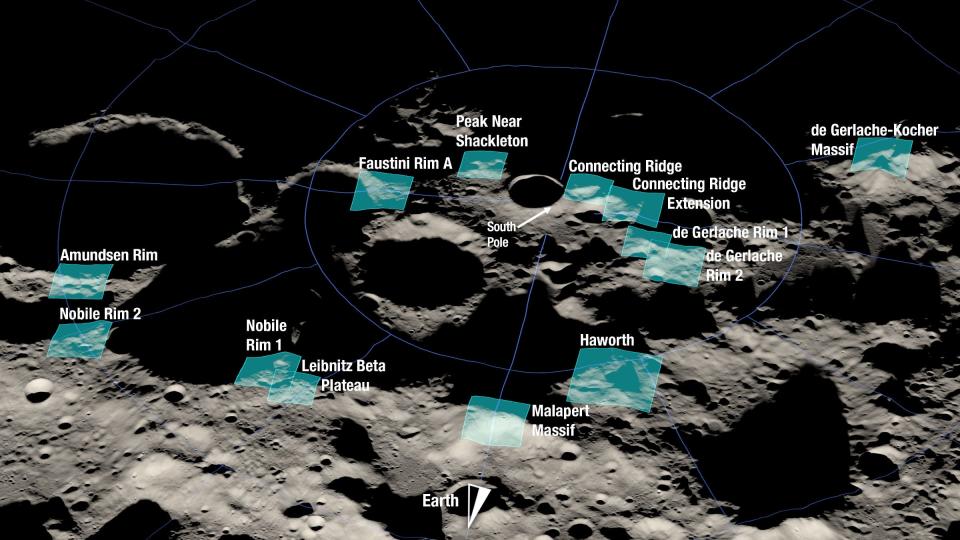'One giant leap closer': NASA identifies landing sites in preparation to return humans to moon
NASA unveiled 13 regions near the moon's South Pole as potential landing sites for the Artemis III mission to return humans to lunar surface.
“Selecting these regions means we are one giant leap closer to returning humans to the Moon for the first time since Apollo,” said Mark Kirasich, deputy associate administrator for the Artemis Campaign Development Division at NASA Headquarters in Washington. “When we do, it will be unlike any mission that’s come before as astronauts venture into dark areas previously unexplored by humans and lay the groundwork for future long-term stays.”
The space agency said all the regions considered are scientifically significant because of their proximity to the lunar South Pole, which is an area that contains permanently shadowed regions rich in resources and in terrain unexplored by humans.
NASA's big gamble: Is new rocket too costly to launch us back to the moon?
NASA Artemis I mission: NASA rolls massive Artemis I moon rocket to Florida pad ahead of historic launch
Artemis launch: Celebrity appearances by Chris Evans, Jack Black, Keke Palmer, Josh Groban
“Several of the proposed sites within the regions are located among some of the oldest parts of the Moon, and together with the permanently shadowed regions, provide the opportunity to learn about the history of the Moon through previously unstudied lunar materials,” said Sarah Noble, Artemis lunar science lead for NASA’s Planetary Science Division.
Artemis III, expected to launch no earlier than late 2025, will return humans to the moon for the first time since the Apollo 17 mission in 1972. The six Apollo missions that landed men on the moon did in areas much closer to the moon's equator to take advantage of abundant sunlight, which was used to help power the Lunar Excursion Modules and to avoid extreme temperature changes.

Landing at the South Pole will allow the lunar lander to remain in the sunlight needed to power the vehicle while allowing the astronauts to visit nearby areas which are perpetually shaded from sunlight. This will allow crew to collect samples and conduct scientific analysis that could yield important information about the depth, distribution, and composition of water ice that was confirmed at the moon’s South Pole, NASA said.
Moon mission mementos: NASA's Artemis I moon mission includes educational, cultural, and commemorative mementos
Artemis launch: Space Coast hotels are filling up. Where should I stay to watch NASA mega moon rocket liftoff?
All clear: NASA is 'go' for launch of massive SLS rocket for Artemis I mission to moon
Artemis III calls for astronauts to be on the lunar surface for 6.5 days. Each of the 13 sites chosen is tied to a specific launch window that ensures the landing vehicle will remain in the sunlight for the duration of its stay on the lunar surface.
NASA will select sites within regions for Artemis III after it identifies the mission’s target launch dates, which dictate transfer trajectories and surface environment conditions.
The agency is targeting Aug. 29 for the launch of Artemis I, an uncrewed mission that will send an Orion capsule to lunar orbit and back. From launch to splashdown, the mission should run just over 42 days.
If all goes according to plan, that will pave the way for Artemis II, which will do much the same in 2024 but with astronauts. Then Artemis III is expected to put two astronauts on the surface of the moon sometime after 2025.
A 25+ year veteran of FLORIDA TODAY, John McCarthy currently oversees the space team and special projects. Support quality local journalism by subscribing to FLORIDA TODAY. You can contact McCarthy at 321-752-5018 or jmccarthy@floridatoday.com.
This article originally appeared on Florida Today: NASA considers moon's South Pole for Artemis III mission landing site

